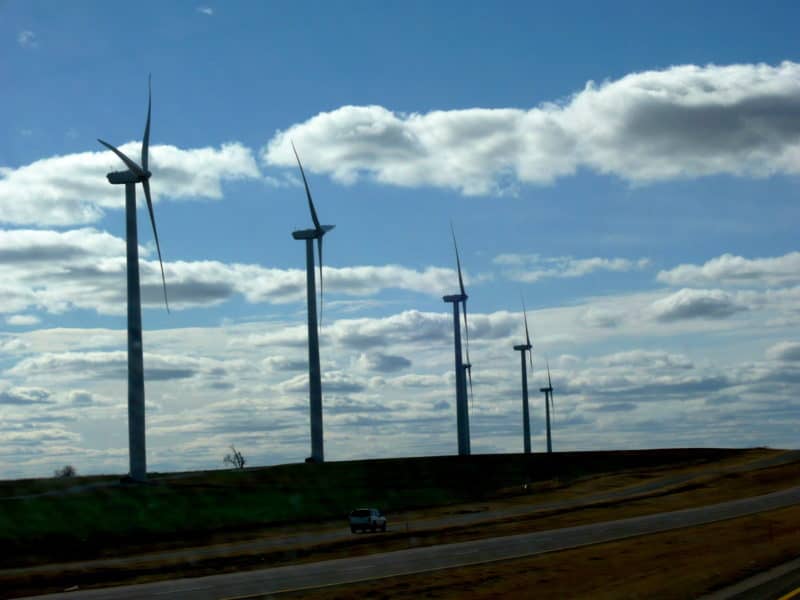In December, yet another global climate change conference—this one in Durban, South Africa—failed to bind the world’s greatest polluters to specific, quantifiable curbs in their greenhouse gas emissions. Sadly, America was among the leading forces fighting the adoption of greenhouse gas reduction targets, just as we fought these targets in Bali the previous year, and in Copenhagen the year before that.
Even as America shirks its responsibility before the international community, there is a lot we can do here at home to reduce our nation’s massive carbon footprint. Boosting renewable energy’s share of our electricity supply should be at the top of that agenda.
The Congressional uproar over the failed federal loan guarantee to solar manufacturer Solyndra shouldn’t be allowed to cast a shadow over our government’s broader efforts to stimulate renewable energy growth. Nowhere have federal energy incentives been more effective than in launching American wind power. Part of that success hinges on a production tax credit that gives wind manufacturers and wind farm developers enough confidence to break into a field still dominated by underpriced fossil fuels and heavily subsidized nuclear power.
Today wind supplies a relatively modest three percent of our electricity, but it’s growing fast. The Department of Energy projects that wind, with the right incentives, could supply a fifth or more of our power by 2030. Others see as much as half of our electricity coming from wind by mid-century. Wind farms already account for 17 percent of Iowa’s electric output and nearly 7 percent of power generated in Texas, America’s biggest electricity user.
Unlike the battering that U.S. solar equipment producers have suffered at the hands of Chinese and other Asian competitors, America is well on its way to building a robust domestic manufacturing platform for wind. General Electric makes over half of the turbines sold in America, and a smaller U.S. firm, UTC-owned Clipper Windpower, contributes further to U.S. sales. Several non-U.S. turbine companies have also built factories here. Given what it costs to ship bulky equipment like giant blades and multi-ton steel towers across the seas, wind manufacturers realize big savings by producing this hardware on U.S. soil.
If the tax credit expires, many wind developers will hold off on siting new wind farms, and… tens of thousands of people now employed by the wind industry risk losing their jobs.
Looking at the American wind industry’s overall supply chain, the story gets even better. Hundreds of companies employing thousands of skilled and semi-skilled workers are now involved in manufacturing components and subcomponents for turbines. American labor today creates about 60 percent of the value of a typical turbine sold in the United States. Rust Belt stalwarts like Ohio-based Timken, maker of the “million-mile bearing” for the automotive sector, have made a major strategic shift toward wind. The rugged weather endured by turbines is a perfect match for Timken’s super-high standards.
Add to manufacturing jobs the thousands of people who build our wind farms. Truckers, crane operators, electricians, concrete suppliers, and civil engineers are all finding new jobs in wind farm construction. And once these farms are in operation, thousands more are employed keeping turbines running reliably.
Roughly 75,000 Americans now have jobs in the wind industry. The Department of Energy predicts that over a quarter-of-a-million people will be gainfully employed by this sector as we approach the 2030 date for supplying a fifth of our power from wind. As important as the number of jobs is where many of those jobs are located—in rural communities where it’s been hard to find work even in good economic times.
In an ideal world, power suppliers would compete in a marketplace that reflected the true costs of each technology. The European Union is moving in this direction, with a carbon emission-trading regime that has begun to monetize the global-warming impacts of coal and other fossil fuels used by electric utilities and other major industries. In America, fossil fuel producers and users do not pay for the environmental devastation they cause. To the contrary, they benefit from billions of dollars in subsidies each year, nurtured for decades by an army of well-paid lobbyists.
Faced with these imbalances, renewable energy producers are fighting an uphill battle. Federal incentives, like the 2.2 cent-per-kilowatt-hour production tax credit for wind that is due to expire at the end of this year, are essential to leveling the playing field. Thanks to this tax credit, wind farms can compete with proposed new coal plants, and even with electricity from new natural gas facilities in some locations. If the tax credit expires, many wind developers will hold off on siting new wind farms, and wind turbine manufacturers will have to scale back production. Aside from the lost environmental opportunity, tens of thousands of people now employed by the wind industry risk losing their jobs.
In a rare bipartisan move, 23 governors—Republicans and Democrats—have appealed to Congress to renew the renewable energy production tax credit. Their motivation may have little to do with taming the global-warming juggernaut, but these savvy politicians are fully aware of the economic benefits that a vibrant wind industry can bring to their constituencies.
Many years may pass before Congress summons the resolve to cap America’s greenhouse gas emissions. Meanwhile, extending the renewable energy production tax credit—a measure that has already proven its worth to our economy and the environment—is a worthy step.
By arrangement with BeaconBroadside.net.


